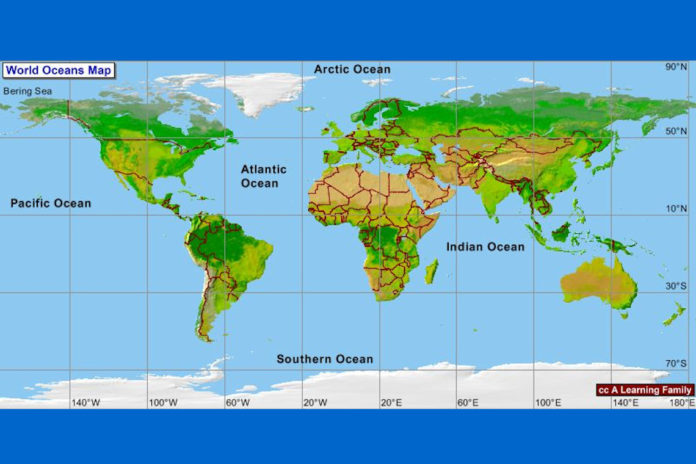The hydrosphere is all forms of water surrounding the Earth. This includes liquid water in the oceans, water vapor in the atmosphere, and solid ice. Most of the water is found in the world’s oceans.
Water in the Hydrosphere
The world’s oceans are large bodies of salt water that cover 72% of the earth’s surface. There are five major oceans on the planet. The world’s seas are smaller bodies of water that are part of a larger ocean. Seas usually have a boundary with a land area.
Oceans and Seas
The oceans are the largest sources of water on Earth. Oceans and seas represent 97% of the water on Earth. The cycle of water from ocean evaporation to the atmosphere and back to earth as rain is essential for life. This cycle of water is also known as the hydrologic cycle. Water plays many key roles on the earth’s surface.
Climate: The oceans and seas have a great influence on the earth’s climates. The oceans store and transport energy which influences the world’s climates.
Habitat: The oceans are the primary habitat for two million different marine lifeforms.
Landforms: The water cycle also plays a role in the erosion of landforms.
The Five Oceans of the World
The five oceans are the Arctic, Atlantic, Indian, Pacific and Southern Oceans. The Pacific Ocean is the largest ocean. The Arctic Ocean is the smallest ocean.
The table below shows the difference in their sizes.
| OCEAN | AREA |
|---|---|
| Pacific Ocean | 165 million square kilometers |
| Atlantic Ocean | 106 million square kilometers |
| Indian Ocean | 74 million square kilometers |
| Southern Ocean | 20 million square kilometers |
| Arctic Ocean | 14 million square kilometers |
The Largest Seas
It is difficult to define how many seas there are. The world’s seas include seas, bays, gulfs, and other large bodies of water. The ten largest “seas” are listed below.
- Mediterranean Sea
- Caribbean Sea
- South China Sea
- Bering Sea
- Gulf of Mexico
- Okhotsk Sea
- East China Sea
- Hudson Bay
- Japan Sea
- Andaman Sea
Reflections
Vocabulary
- hydrosphere
- ocean
- hydrologic cycle
Notes
- Five oceans make up over 70% of the earth’s surface. The Pacific is the largest ocean.
- Seas are smaller bodies of water that are part of an ocean with a land boundary
- Oceans and seas are important for the planet’s water cycle, climates, and lifeforms.
Bibliography
- A Hydrosphere Study Guide
- National Ocean Science
- Oceans and Coasts, NOAA

